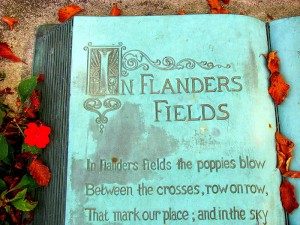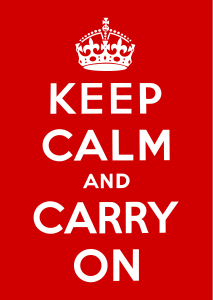Resources For Remembrance Day
November 11th marks Remembrance Day, an opportunity to honour those who have served in the nation’s defence. Originally referred to as Armistice Day and known as Veterans Day in the United States, this date represents the end of hostilities in the First World War. We pay tribute to veterans by wearing poppies, participating in two minutes of silence, and reciting the poem, “In Flanders Fields.”
Teaching Remembrance Day
Remembrance Day is an important occasion and a meaningful learning opportunity for learners. History classes teach learners about November 11th, but what about other subjects? How can we implement a cross-curricular approach to integrate Remembrance Day into our other classes?
I have taken several key concepts as inspiration for lessons in the following subjects.
Visual arts
“Keep Calm and Carry On” has become a popular saying, remixed meme, and image that your learners are sure to recognize. I bet they didn’t know that the British government made the original poster version to boost morale during the Second World War. By engaging your learners in a discussion about morale, you could ask for examples of how the poster has been altered but still contains similar sentiments. A simple Google image search will retrieve thousands of versions, like “Keep Calm and Stay Strong” or “Keep Calm and Sparkle On.” You could then ask learners to create a version for themselves, using their best morale-boosting prose that reflects their own mantra. They could also write a one-paragraph reflection on their poster, explaining its meaning and how it relates to the original British concept.
English language arts

The peace sign. (Source: Pixabay)
While most learners use the peace sign in their selfies or think of it as a symbol of the 1960s flower-power era, Winston Churchill used it first. It used to be an obscene gesture, but Churchill transformed it into one of peace and positivity. Have learners conduct further research into the topic and write about how the peace sign has evolved. How is it most commonly used now? How has the meaning changed?
Drama

In Flanders Fields poem. (Source: Wiki Commons)
Using the poem “In Flanders Fields,” have learners create a tableau. A tableau is when learners create still images with their bodies to depict a particular scene. Divide your learners into small groups, and give each group two to three consecutive lines of the poem. Learners should discuss what their lines mean and then work together to create the still images that symbolize them. Have a learner narrate the poem aloud (or play it from a recording) while learners form their silent scenes. Together it will depict the entire poem. Afterward, they should be able to explain the meaning behind their lines.
History

Example timeline from Tiki Toki. (Source: Tiki Toki)
Guide learners to create a timeline that captures the ten most important events from the First World War. One easy-to-use online tool is Tiki-Toki, which allows learners to create events and add images, videos, and URL links. Learners can colour-code events into different categories, allowing them to analyze the event’s significance further and determine its category. Other online timeline tools are Sutori, Timetoast, and Preceden.
How will you be teaching Remembrance Day in your classroom?
Additional Remembrance Day Resources
Canadian Veterans Day Teacher Guides









